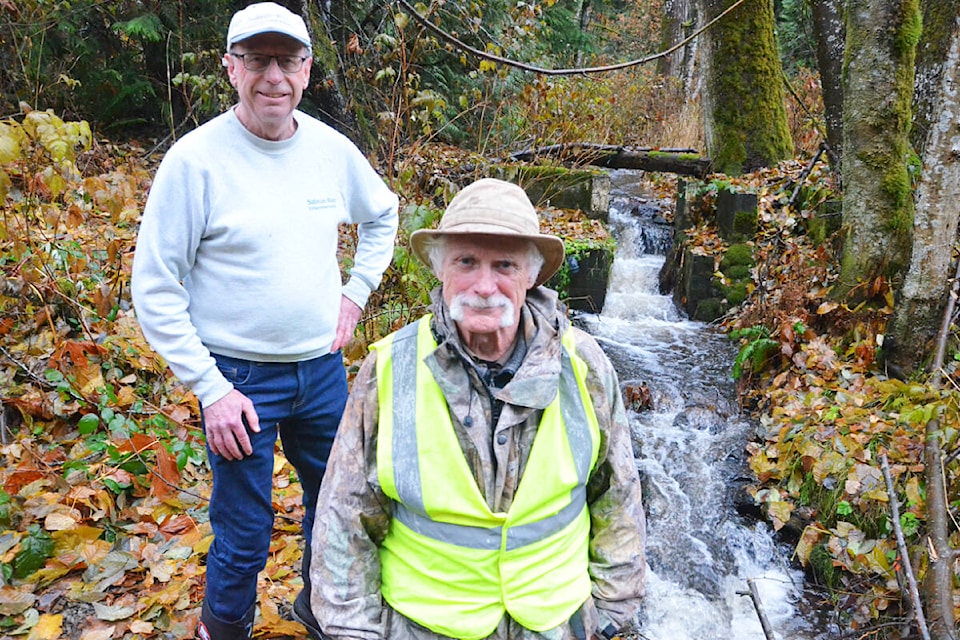The return of the rain has brought spawning coho back to local streams.
On Friday, Nov. 25, Gerry Reist and Doug McFee of the Salmon River Enhancement Society were down by Union Creek, one of the tributaries of the Salmon River, in the North Otter area.
Next to the fast-moving waters, they pointed out coho salmon lashing their tails as they flung themselves up from one pool to another, heading upstream to their spawning grounds.
“They’re wild,” McFee said. “We don’t have a hatchery on the river.”
For many years, the Salmon River was an “index stream” in the Lower Mainland, used to determine the overall health of the salmon population, but it’s been years since there were regular fish counts here.
McFee said the coho have been waiting to make their way up the creeks and local rivers for weeks.
“We should see good numbers after heavy rains in the next month,” he said. “People should note, however, that the Salmon River has been closed to fishing coho for several years.”
Reist is worried, after having seen a number of people fishing in the local creeks, apparently without licenses. Poaching can be a serious problem, he believes. After such a long dry spell, the fish don’t need any more stress.
The Salmon River runs through much of central and northern Langley, from the Fraser River west of Fort Langley, up through many tributaries in the region known as the Salmon River Uplands.
Coho like to spawn in these small tributaries, with plenty of trees providing shade to keep the water cool, as well as cover from predators.
READ ALSO: Fight against invasive English ivy to resume in Aldergrove
READ ALSO: Volunteers carry out Aldergrove cleanup in the pouring rain
“Even streams only three or four feet wide are full enough after heavy rains that you can see coho as big as 10 pounds fight their way up to find gravel and spawn,” said McFee.
The number of salmon that spawn in the river is much lower than it was in the 1970s, mostly due to poor ocean survival, McFee said.
But there has also been the loss of some streams, mostly earlier in the 20th century. Many smaller creeks were filled in or turned into ditches over the years on local farms.
There’s not much local streamkeepers can do about that, but they aim to protect what is left, mainly by helping educate the public.
Once the salmon spawn, the next generation will hatch in the creeks.
They’ll stay there, maturing for about a year.
That means they need a steady flow of water.
“Despite the severe drought this year, we found abundant cool fresh water in the Salmon River west of 248th Street,” said Reist. “The river flows in deep ravines with the aquifer feeding springs flowing from the banks. Some of the best flows feed Coghlan Creek which joins the Salmon River in Williams Park.”
“We are worried,” Reist added, “that small tributaries will go dry in the summer as the Hopington aquifer has been falling a foot a year for over 30 years. We plan to survey tributaries each summer to check flows.”
McFee said the group is also considering planting some more trees next year. They may need some volunteer help for that.
Other projects have included helping out with the Langley Environmental Partners Society’s recent ivy-pulling project in Steele Park. Removing invasive species helps protect the native species that form the habitat around the salmon streams.
Have a story tip? Email: matthew.claxton@langleyadvancetimes.com
Like us on Facebook and follow us on Twitter.
